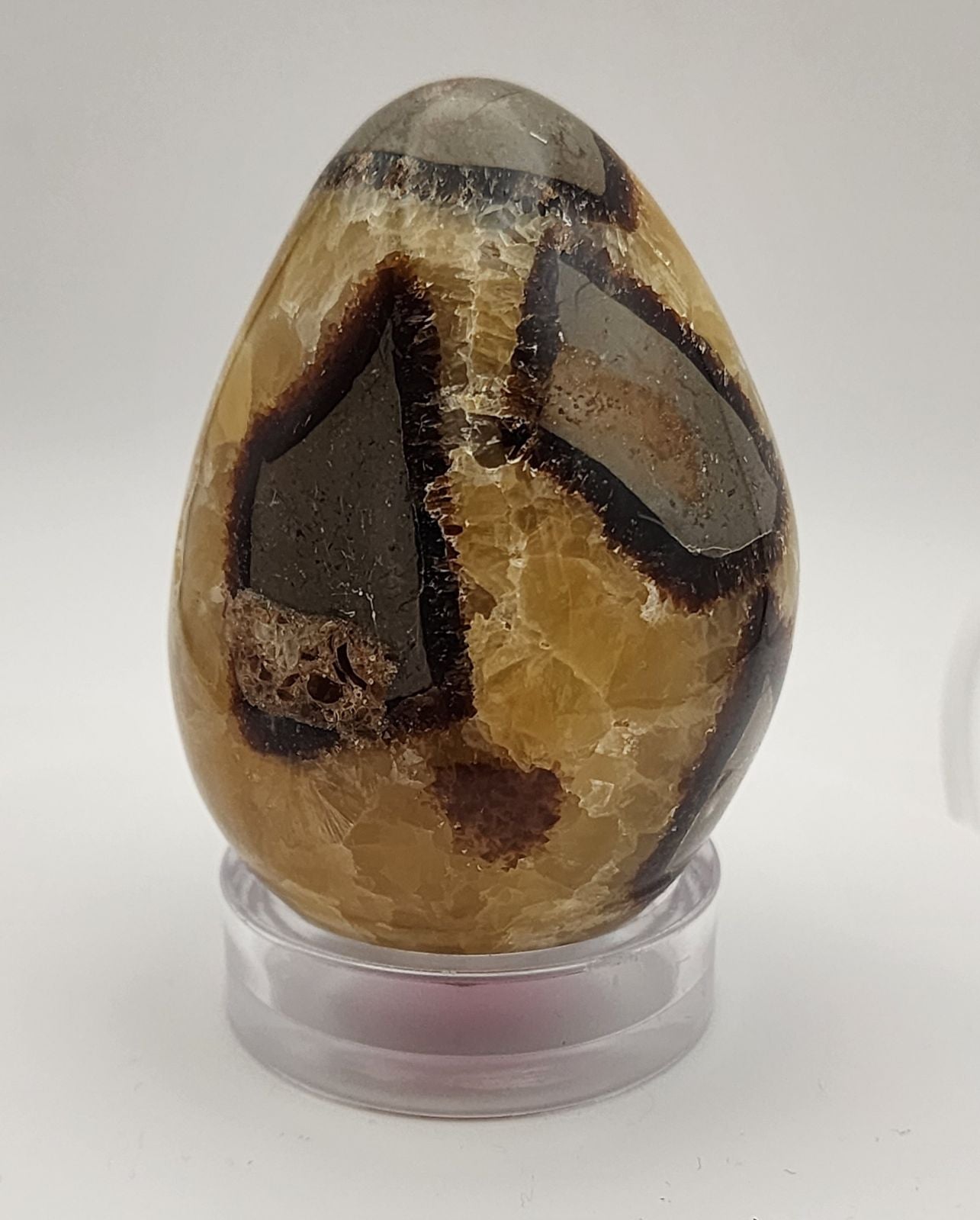Twins Peak Rocks and Minerals
Septarian Egg 68 X 48 MM ~#2
Septarian Egg 68 X 48 MM ~#2
Couldn't load pickup availability
Size: 68 MM tall / 48 MM wide
A Septarian Egg is a unique and captivating natural geological formation, rather than a carved or crafted object like an amethyst sphere. Septarian nodules, also known as Septarian concretions or Septarian stones, are spherical or egg-shaped structures that form in sedimentary rocks over millions of years.
Septarian nodules are typically composed of a combination of minerals, including calcite, aragonite, limestone, and occasionally barite. What makes Septarian nodules distinctive is the pattern of cracks or fissures that radiate outward from the center, creating intricate designs resembling a cracked eggshell. These cracks are often filled with minerals such as calcite, giving them a striking appearance.
Septarian nodules are believed to have formed during the Cretaceous period, around 50 to 70 million years ago. The exact process of their formation is still a subject of scientific study, but it is generally believed that they formed in ancient seabeds where layers of sediment accumulated over time. As the sediment hardened into rock, organic matter within it decayed, releasing gases such as methane. The pressure from these gases caused the surrounding sediment to crack, and minerals subsequently filled in the cracks, creating the distinctive patterns seen in Septarian nodules.
Septarian eggs and nodules are prized by collectors and enthusiasts for their natural beauty and unique geological history. They are often polished to enhance their appearance and reveal the intricate patterns within. In addition to their aesthetic appeal, Septarian nodules are sometimes associated with metaphysical properties such as grounding, stability, and nurturing.
Share







